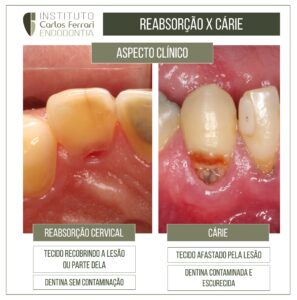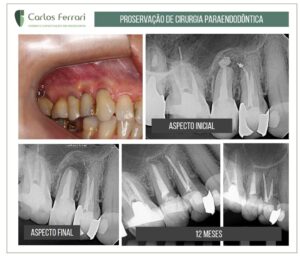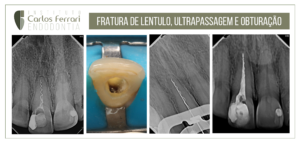Clareamento interno em molar inferior. Paciente procurou atendimento queixando-se de dor e inchaço na região gengival inferior direita e escurecimento da coroa do dente 46.
No exame clínico, edema gengival na região do 46, com bolsa periodontal vestibular, dor à percussão e à palpação. O exame radiográfico revelou imagem radiolúcida periapical no dente 46 e tratamento endodôntico aparentemente bem executado, porém, o paciente relatou o não uso de isolamento absoluto durante o tratamento, o que reforça a hipótese de contaminação, mais especificamente da câmara pulpar, ocasionando o escurecimento. Na tomografia, observou-se imagem na furca, que poderia ser compatível com um canal cavo, ligado à uma área hipodensa em meia lua, sugerindo contaminação deste canal.
No acesso, observou-se dentina contaminada. Fez-se a sanificação inicial, seguida da pesquisa por trinca, com azul de metileno. Observou-se então, a imagem do canal cavo, perto do canal distal. Os canais foram então esvaziados, descontaminados e realizada medicação com Bio C Temp.
No retorno, 15 dias após, ausência de sinais e sintomas e observa-se também o retorno do dente à sua coloração original. Os canais foram então obturados.
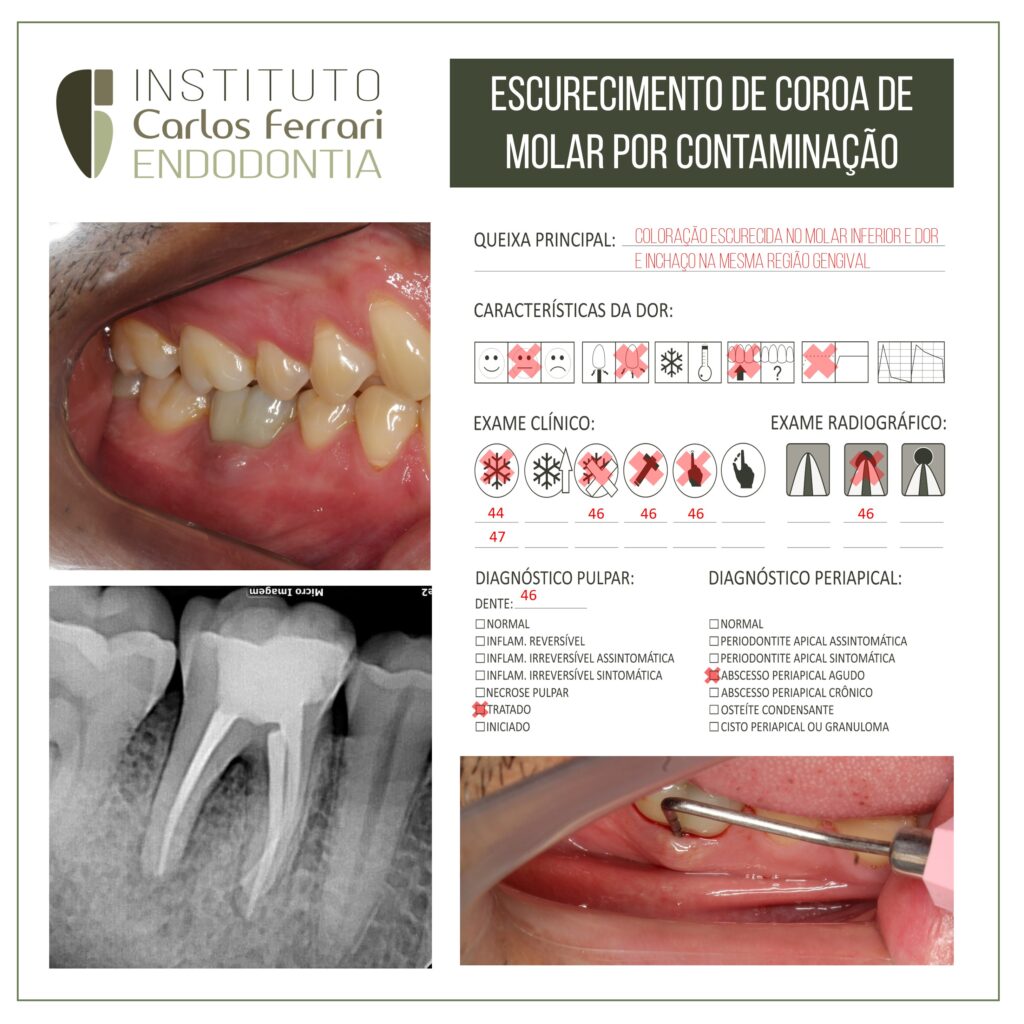
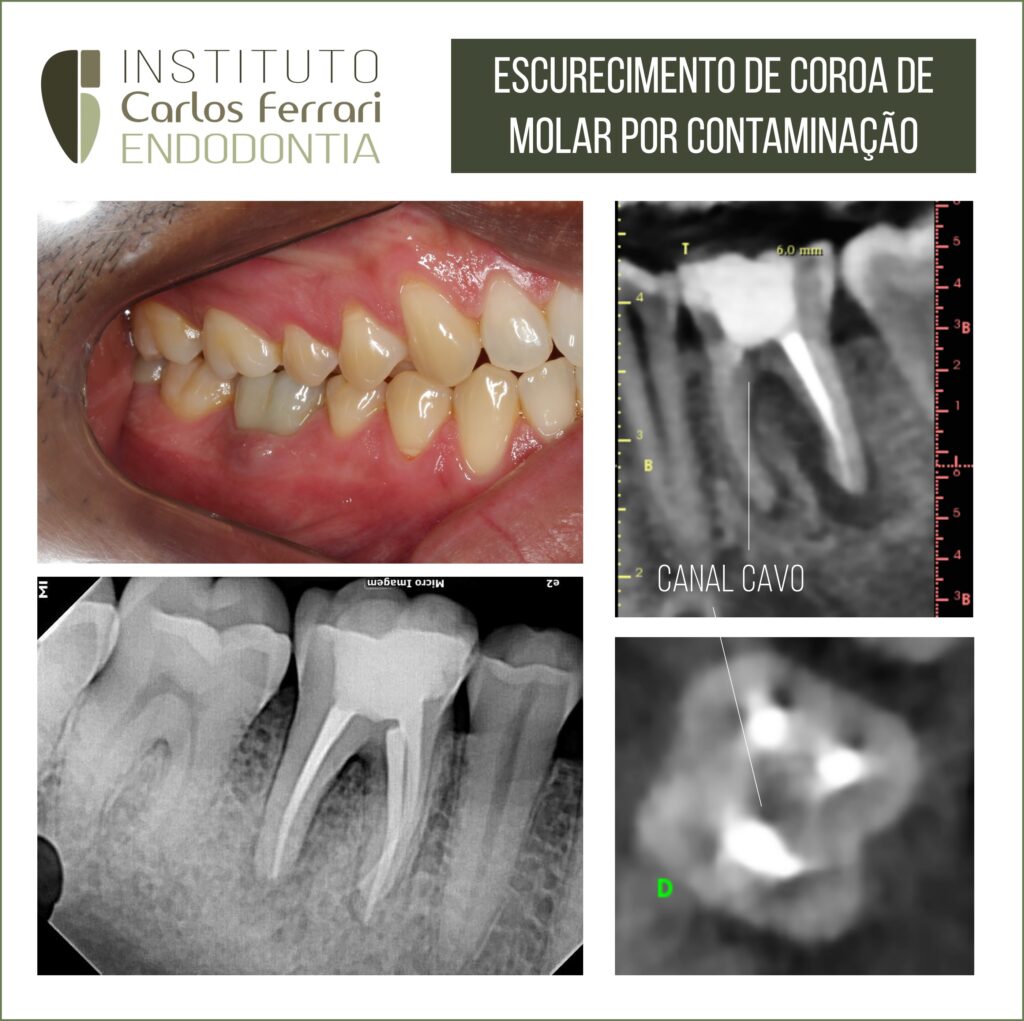
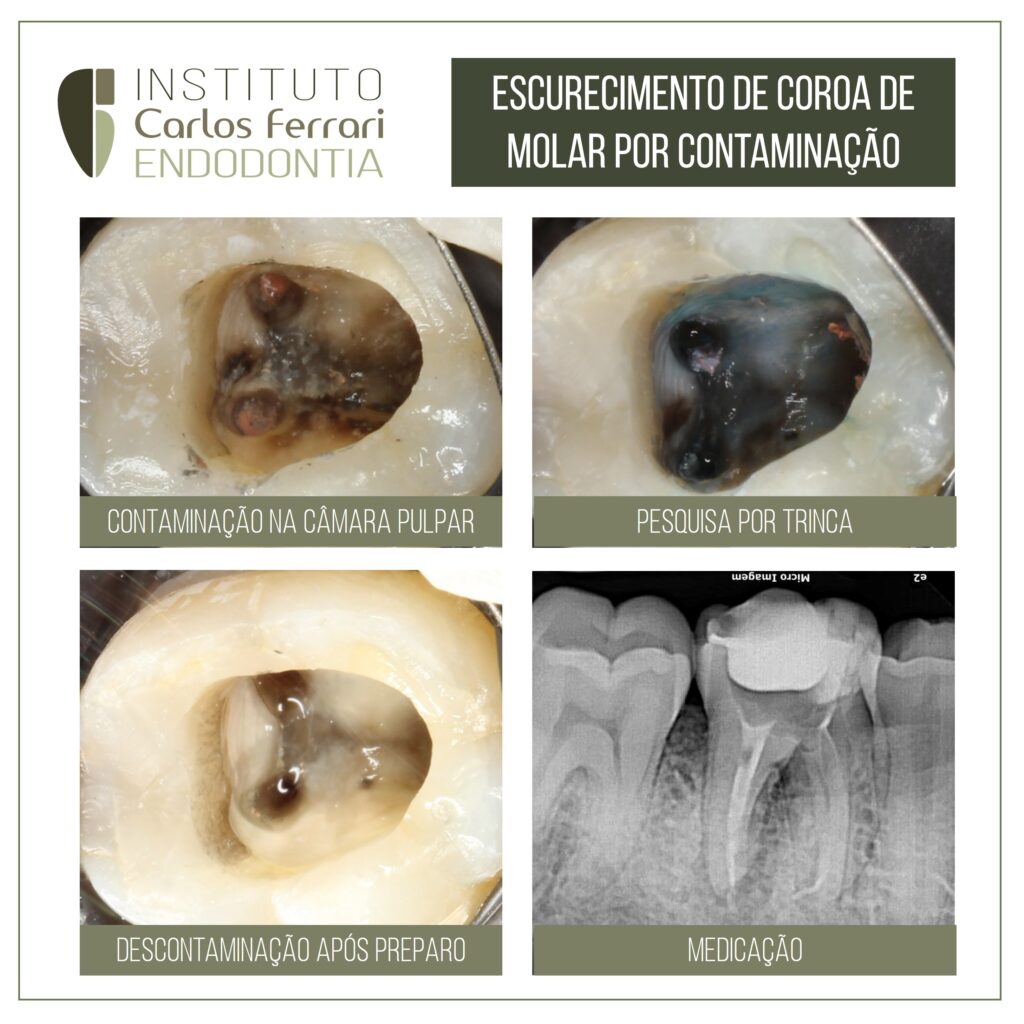
In: Rocha et al. Reintervenção endodôntica e clareamento endógeno de dentes anteriores escurecidos: relato de caso. Arch Health Invest (2020) 9(2):112-118
O objet ivo fundamental do tratamentoendodôntico é permitir a permanência dos dentes em função na cavidade bucal sem comprometer a saúdedo paciente. O notável surgimento de novos materiais, novas técnicas e novas tecnologias na Endodontia levam a elevados índices de sucesso na terapia endodôntica, apesar de não ser raro deparar-se na clínica com pacientes cujo tratamento fracassou, constatado através de sinais e sintomas.
Apesar dosesforços para que se alcance sucesso clínico, falhaspodem ocorrer e é possível lançar mão dareintervenção endodôntica para que se mantenha os dentes em função. O insucesso endodôntico pode estar relacionado à persistência de bactérias no canalradicular, falta de domínio técnico do profissional, como erros nos procedimentos de preparobiomecânico, obturação insatisfatória, canais nãotratados, canais obturados, porém expostos à salivapor perda do selamento temporário, restauraçõesinadequadas, microinfiltrações, perfuraçõesiatrogênicas e fraturas de instrumentos.
Algunstratamentos endodônticos ou técnicas inapropriadas podem ocasionar complicações estéticas, especificamente o escurecimento dentário. Dentre as principais etiologias do escurecimento em dentes desvitalizados estão a presença de materiais
obturadores na câmara pulpar, remanescentes de tecido pulpar após o tratamento endodôntico, necrose pulpar e algumas medicações intracanal, como o iodofórmio. Nos elementos anteriores, alterações na coloração podem desencadear implicações psicológicas, prejudicando a estética do sorriso e levando à baixa autoestima do paciente.
Em casos de insucesso endodôntico, faz-se necessária uma nova intervenção no canal, com a finalidade de reverter a falha da terapia anterior e tornar o dente novamente funcional. A reintervenção convencional, sempre que possível, é selecionada como primeira alternativa de tratamento, por ser tida como um procedimento menos invasivo em comparação à cirurgia parendodôntica, apresentando baixo custo e bom prognóstico.
Essencialmente, o retratamento não cirúrgico consiste na desobturação dos canais radiculares, reinstrumentação, desinfecção e reobturação dossistemas de canais para permitir o reparo das estruturas e tecidos de suporte.
Clareamento interno em molar inferior
.



